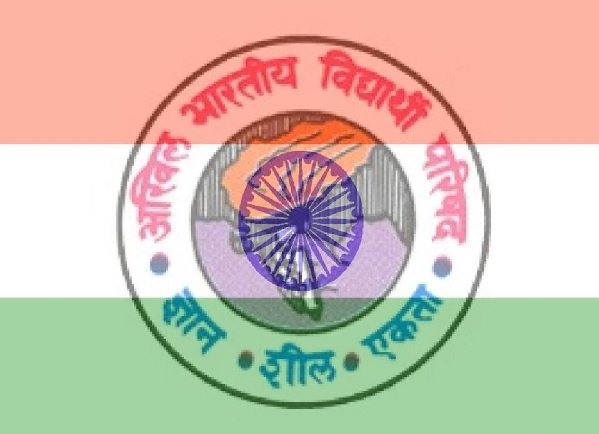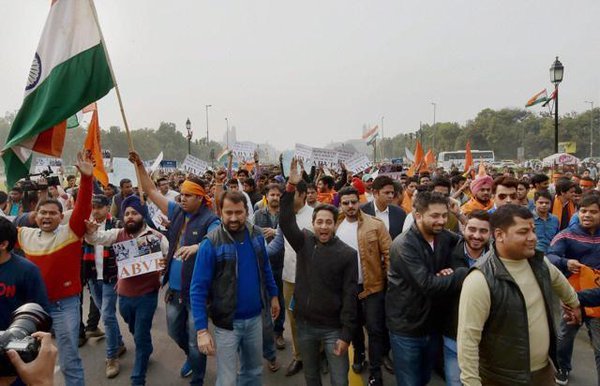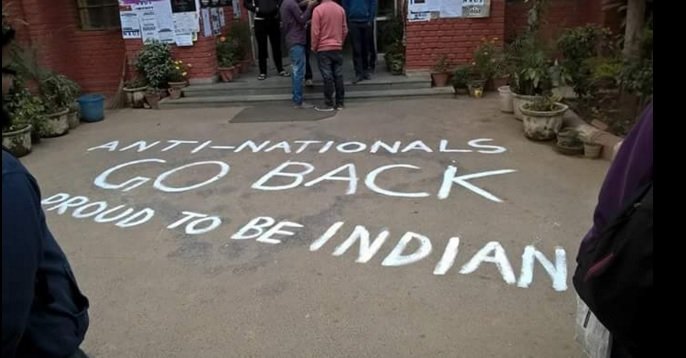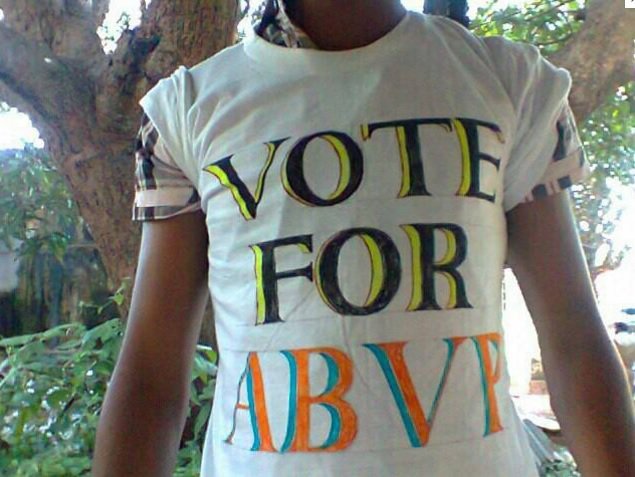Writing for the magazine Centre Right in 2013, a former JNU student recalled the baby steps that the RSS – said to be the ideological head of the Bharatiya Janata Party – made into the Jawaharlal Nehru University. A supposedly left-bastion since its inception in 1964, JNU’s first brush with the right-leaning ideology started only in the ’90s, when an RSS pracharak began to visit the university on a regular basis, the student writes.
In those days, an RSS flag-bearer in JNU was equivalent to a Jew in Nazi Germany, he recalls.
This incident will give you a clearer picture: After several meetings with the pracharak, a student invited him for dinner with his university friends. The RSS man turned up in his Sangh attire. The group simply left the table without touching the meal.

Since then, the right wing at the JNU has come a long way. For the uninitiated, the ABVP was registered in 1949, almost 30 years before the BJP was established. Rakesh Sinha, an RSS ideologue who fought (and lost) on an ABVP ticket in Delhi University polls three decades ago, told Scroll.in that the aim was to provide an alternative to the then dominating leftist discourse.
The student wing steadily evolved at the campus and, in 1982, it created history when it won a Councillor’s post.

At the JNU, besides the four central posts of president, vice president, secretary and joint secretary, there are 31 councillor posts belonging to its several schools. While Congress’s student wing NSUI has hardly ever been popular, the prominent players include CPI’s student wing All India Student’s Federation (AISF), All India Students’ Association (AISA), Democratic Students’ Federation (DSF) and Students’ Federation of India (SFI) – all left-leaning.
“A lull followed, but the party revived in 1991, when it again bagged multiple councillor’s posts. The year ’96 proved to be ground-breaking, when we won three central seats. Till 2000, we continuously won core posts,” ABVP senior leader Gaurav Jha told Scoopwhoop.
What explains the rise of ABVP at JNU in the ’90s?
According to Jha, it was a combination of a lot of factors. “Breakdown of the Soviet Union definitely played a major role. Movements like globalisation and even nationalism led to the weakening of the Left, which benefited us tremendously,” he said.
Jha added that a crucial factor was that while the left groups only fought on ideologies concerning international politics, ABVP for the first time focused on immediate and ground problems such as opening a ticket counter in the premises.

The ABVP created history in 2000 when Sandeep Mahapatra, now an advocate, clinched the presidential title – by a margin of one vote. Interestingly, the party hasn’t been able to repeat the feat.
Two years later, the ABVP set another benchmark when in 2002 it invited Ashok Singhal of Vishwa Hindu Parishad for a Guru Dakshina event. Of course, the event was vehemently and violently opposed by the entire leftist student community, but went on to reinforce the right wing’s presence in the ‘red’ premises.
However, the party was to see another lull, one so long that it took them 14 years to reclaim a central post. It was in September 2015 that ABVP’s Saurabh Kumar Sharma managed to be elected the joint secretary. Actually, the ABVP stood second in two of the four central panel seats — vice-president and general secretary. The win, however, wasn’t entirely unexpected, as, riding on the Narendra Modi wave, the BJP had won the general elections of 2014.
Reacting to the win, Mahapatra told Hindustan Times, “Students have realised that they need to align themselves with nationalist forces. This is why ABVP has made a comeback in JNU. It has been consistently increasing its vote share in the campus for many years now.”
What had happened in the period in between?
Jha said post 2000, the party took a hit because of an internal rift, “basically a leadership issue”. In 2003, the JNU-ABVP split into two – the other group named itself the JNU Patriotic Forum. The new party, however, died a rather quick death by 2005, and members vowed to revive the original student wing. They had to wait till 2015 for a comeback.

But the win in 2015 was dismissed by AISF’s Kanhaiya Kumar who was elected president (now facing sedition charges), saying the margin – 28 seats – was too small for consideration. He told Scroll.in, “The ABVP’s win in JNU is no sign of its popularity…India’s electoral system is of the first-past-the-post which allows for a lot of arithmetic manoeuvring. ABVP merely consolidated the right-wing vote while left parties fought against each other in the elections.”
Lalit Pandey, an MPhil student and ABVP-JNU’s secretary, refutes the theory. “JNU is not Delhi University where the voter turnout run in tens of thousands. Here, a little more than 50% of the 8,000 students cast their vote. So every single vote matters, and 28 votes is a good margin.”
According to Pandey, who joined JNU’s Sanskrit department in 2012, he ABVP is fast gaining ground at the campus and hopes for a major success in 2016.
Another prominent student wing member, who did not wish to be named, said, “JNU has become a hub for anti-nationalist activities. All this is done with the collusion of some professors and faculty members, who target students who do not follow their ideology. I have noticed that there is much near hatred towards all customs Hindu and even Indian. Like, sporting a tikka on the forehead is communal, so is chanting of Vande Mataram and support to the Indian Army.”
That the ABVP’s supposed popularity can’t be underestimated, was echoed by Kanhaiya Kumar in January (much before he was arrested on the charges of sedition) when he told Scroll.in, “The ABVP has been among the most prominent political forces in the country for several decades and it still has a lot of influence…Their ideology or actions might be questionable and seem in opposition to ours but their proximity to the policy-makers is undeniable.”

Party associates seem determined to change the face of students politics at JNU. In 2013, while moderating an alumni meet of former JNU students associated with RSS and ABVP, Sandeep Mahapatra said it was time to contain Left activism in JNU as it was making inroads in other parts of Delhi.

















